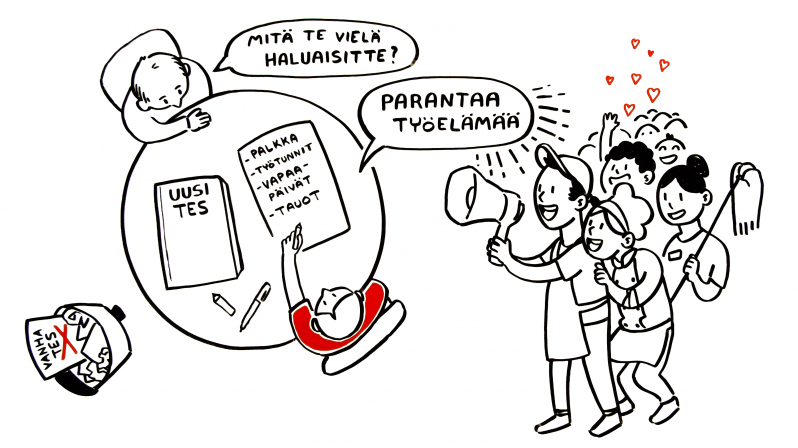Five facts about collective agreements and how are they negotiated
All of the collective agreements that PAM has negotiated end in early 2022 and have to be negotiated again. Here are the basics.
- Collective agreements set the minimum pay, terms, and conditions for employment. Collective agreements are negotiated by trade union representing the workers and employers’ federations representing the employers. Collective agreements are called työehtosopimus or TES in Finnish.
- PAM negotiates collective agreements for workers in the private services sectors. PAM’s goals and priorities in the negotiations are based on the views of PAM’s members. The employers have their own goals for the agreements. Negotiations always start from a blank slate, and an agreement is always a compromise.
- Union power comes from the workers. The more services sector workers are members in PAM, the stronger the unions position in the negotiations. Demonstrations and the threat of strikes are usually enough to get concessions from the employers’ side.
- Industry wide agreements bind all employers in the sector. If an agreement covers enough companies and workers in the service sector of the agreement, they can be confirmed as generally binding. That means that even employers that are not members of the employers’ federation can give no one lesser pay or terms than in the agreement.
- Collective agreements are also in the employer’s interest. Broad collective agreements set fair rules of competition between companies. While the collective agreement is in force, the workers don’t strike about pay and terms agreed in the agreement. It means smooth operation and predictability for the employer.
Text:: Hildur Boldt



